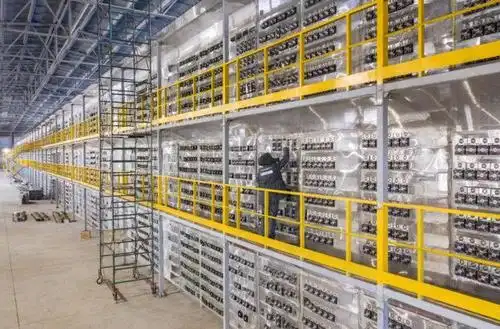In the rapidly evolving world of cryptocurrencies, securing wealth growth has become a paramount objective for investors and tech enthusiasts alike. As we gear up for the financial opportunities that 2025 promises, hosted mining services emerge as a powerful solution for those seeking consistent and scalable profits without the associated operational headaches. While Bitcoin and Ethereum continue to dominate market conversations, the infrastructure supporting their mining—particularly the hosting and management of mining rigs—deserves closer scrutiny.
Cryptocurrency mining, at its core, involves validating transactions and adding them to a blockchain’s ledger. Miners leverage specialized equipment—mining machines or rigs—to solve complex mathematical puzzles. Success in this arena translates to earning freshly minted coins like BTC (Bitcoin), ETH (Ethereum), or even DOGE (Dogecoin), alongside transaction fees. However, setting up and maintaining an optimal mining operation entails considerable investment in hardware, electricity, cooling systems, and technical know-how. Herein lies the magic of hosted mining: outsourcing the physical and logistical burdens to professional mining farms that manage the hardware on behalf of the client.
Hosted mining services capitalize on the economies of scale, housing thousands of miners under one roof optimized for energy efficiency and maximum uptime. These mining farms sit strategically in regions with affordable electricity rates and cooling advantages, often integrating renewable energy sources to further reduce costs. Investors acquire or lease mining machines remotely, entrusting their operation, maintenance, and monitoring to expert teams. This symbiotic relationship not only democratizes access to cryptocurrency mining but also cushions clients from the volatility of maintenance expenses and evolving hardware challenges.

Looking specifically at Bitcoin mining, the landscape in 2025 is expected to become even more competitive. The Bitcoin network’s difficulty ratings adjust to maintain a consistent block time, meaning miners must continually upgrade to more efficient rigs or risk falling behind. Hosted mining providers invest aggressively in the latest ASIC (Application-Specific Integrated Circuit) miners, transmitting increased hash rate benefits directly to their customers. This approach shields individual miners from the relentless pace of hardware obsolescence, granting them a stake in top-tier mining without the need to upgrade periodically.
Ethereum presents a slightly different scenario, especially with its transition to proof-of-stake (PoS) mechanisms affecting traditional mining models. Yet, Ethereum Classic and other ETH forks remain viable for hosted mining setups. Moreover, some services now diversify their mining portfolios, deploying rigs capable of shifting between coins like Dogecoin and Ethereum variants based on profitability algorithms that respond to market dynamics in real-time. This fluid adaptability enhances revenue streams and mitigates risks inherent in single-currency mining ventures.

Another critical dimension of hosted mining in 2025 is integration with cryptocurrency exchanges and digital wallets. Seamless transfer of earned tokens into exchange platforms enables users to capitalize on price swings, staking opportunities, or decentralized finance (DeFi) protocols instantly. Advanced hosted mining services now offer dashboards with real-time analytics, live profitability tracking, and auto-swap features that convert mined coins into preferred currencies, ensuring liquidity and maximizing financial agility.
Security remains a pivotal concern when entrusting one’s mining assets to third-party hosting providers. The industry’s leading players incorporate multi-layered cybersecurity protocols, 24/7 surveillance, and insurance policies covering equipment failures or theft. For clients, this translates into peace of mind alongside predictable revenue streams. Furthermore, as regulatory landscapes shift globally, hosted miners benefit from providers who ensure compliance with local energy regulations and fiscal policies, thereby circumventing legal pitfalls.
In sum, the fusion of hosted mining services with cutting-edge mining machinery promises a compelling avenue for wealth growth through 2025 and beyond. As the crypto sector matures, investors increasingly favor hassle-free mining solutions that balance operational efficiency, cost-effectiveness, and strategic diversification across coins like BTC, DOGE, and ETH. Mining farms, empowered by advanced miners and integrated exchange connectivity, act as the backbone of this burgeoning ecosystem, amplifying opportunities while mitigating risks.




Leave a Reply to Jerry Cancel reply